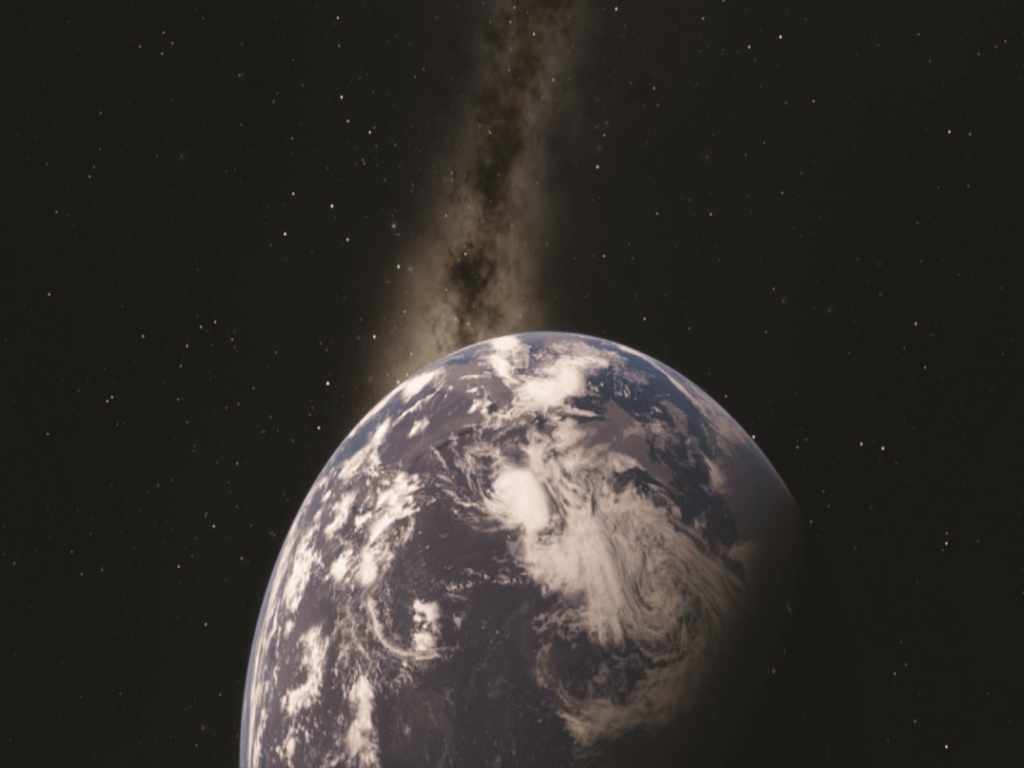Astronomy is a natural science that studies celestial objects and phenomena. It applies mathematics, physics, and chemistry in an effort to explain the origin of those objects and other phenomena and their evolution. Objects of interest include planets in Arabic, moons, stars, nebulae, galaxies in Arabic, and comets, but also include phenomena such as supernova explosions. More generally, everything that originates outside of Earth’s atmosphere is within the purview of astronomy. Learning about space in Arabic allows us to discuss these fascinating topics.
Astronomy is also one of the oldest of the natural sciences. Early civilizations such as the Babylonians, Greeks, Indians, Egyptians, Nubians, Iranians, and Chinese carried out methodical observations of the night sky. Also, astronomy has included disciplines as diverse as astrometry, celestial navigation, observational astronomy, and the making of calendars. As civilizations developed, especially in Mesopotamia, Greece, Persia, India, China, Egypt, and Central America, astronomical observatories were assembled and ideas on the nature of our Universe began to develop. However, most early astronomy consisted of mapping the positions of the stars and planets in Arabic (early astrometry).
Thus, from these observations, early ideas about the motions of the planets were formed, and the nature of the Sun, Moon and the Earth in the Universe were explored philosophically. However, back then, the Earth was believed to be the center of the Universe with the Sun, the Moon and the stars rotating around it.
The Arab World’s Contributions to Astronomy
During the Middle Ages, astronomy flourished in the Arab world. Therefore, this led to the emergence of the first astronomical observatories by the early 9th century. In 964, the Andromeda Galaxy in Arabic, the largest galaxy in the Local Group (the galaxy group that includes the Milky Way), was described by the Persian astronomer Abd al-Rahman al-Sufi in his “Book of Fixed Stars”. Also, The SN 1006 supernova, the brightest apparent magnitude stellar event in recorded history, was observed by the Egyptian-Arabic astronomer Ali ibn Ridwan and Chinese astronomers in 1006. Some of the most prominent astronomers were either Persian or Arab and they made significant contributions to science. Astronomers during that time introduced many Arabic names now used for individual stars. Thus, we compiled a list of vocabulary items related to space in Arabic. This topic often appears in newspapers, yet not many Arabic books deal with it.
Essential Space Vocabulary in Arabic
To help you talk about space in Arabic and understand discussions of planets in Arabic and galaxies in Arabic, here’s a categorized vocabulary list:
The Solar System (المجموعة الشمسية)
| English | Transliteration | Arabic |
|---|---|---|
| Planet in Arabic | Kawkab | كوكب |
| Earth in Arabic | Ard | أرض |
| Sun in Arabic | Shams | شمس |
| Moon in Arabic | Al qamar | القمر |
| Jupiter in Arabic | Al mushtari | المشتري |
| Neptune in Arabic | Nebtoon | نبتون |
| Uranus in Arabic | Orans | أورانوس |
| Saturn in Arabic | Zohal | زحل |
| Mars in Arabic | Al mareekh | المريخ |
| Pluto in Arabic | Bloto | بلوتو |
Celestial Objects (الأجرام السماوية)
| English | Transliteration | Arabic |
|---|---|---|
| Space in Arabic | Fada’ | فضاء |
| Galaxy in Arabic | Majarah | مجرة |
| Star in Arabic | Najm | نجم |
| Comet in Arabic | Mothanab | مذنب |
| Orbit in Arabic | Falak | فَلَك |
| Meteor in Arabic | Nayzak | نيزك |
| Black hole in Arabic | Al thuqb al aswad | الثقب الأسود |
Space Exploration (استكشاف الفضاء)
| English | Transliteration | Arabic |
|---|---|---|
| Spaceship in Arabic | Safenah fda’yah | سفينة فضائية |
| Satellite in Arabic | Qamar sina’i | قمر صناعي |
| Camera in Arabic | Alet tasweer | آلة تصوير |
| Astronaut in Arabic | Ra’ed al fada’ | رائد الفضاء |
| Rocket in Arabic | Sarookh | صاروخ |
| Space station in Arabic | Mahatta fda’yah | محطة فضائية |
| Telescope in Arabic | Miqrab | مقراب |
| Spacesuit in Arabic | Bazzah fda’yah | بزة فضائية |
| Solar eclipse in Arabic | Kosof | كسوف |
| Lunar eclipse in Arabic | Khosof | خسوف |
Arabic Names for Stars: A Lasting Legacy
Scholars in Muslim civilization made considerable advances in the study of astronomy. For example, they made important discoveries, developed instruments, observatories and planetariums. Certainly, eminent astronomers and scientists from that time are remembered today through their legacy. Some have their names given to craters on the Moon, and the Arabic names they used for the stars are still in use today with 165 stars still bearing Arabic names. For example, the 10th-century Persian astronomer Abdul Rahman al-Sufi was the first astronomer to mention the Andromeda galaxy – the Milky Way’s next-door neighbor. He named it ‘little cloud’.
The names of the stars that are still known by their Arabic names include: Leo’s Denebola, which comes from the Arabic word dhanab, meaning ‘the lion’s tail’, and Orion’s Rigel, meaning ‘the foot’. In addition, the brightest star in Taurus is the orange-colored Aldebaran (in Arabic ‘the follower’).
Astronomy is a field that interests many, regardless of their origin and background, and now you have some fun facts to share with your friends! Learning about space in Arabic can open up a whole new world of understanding.
So, if you wish to learn more about the Arabic language, download our Arabic learning app.



